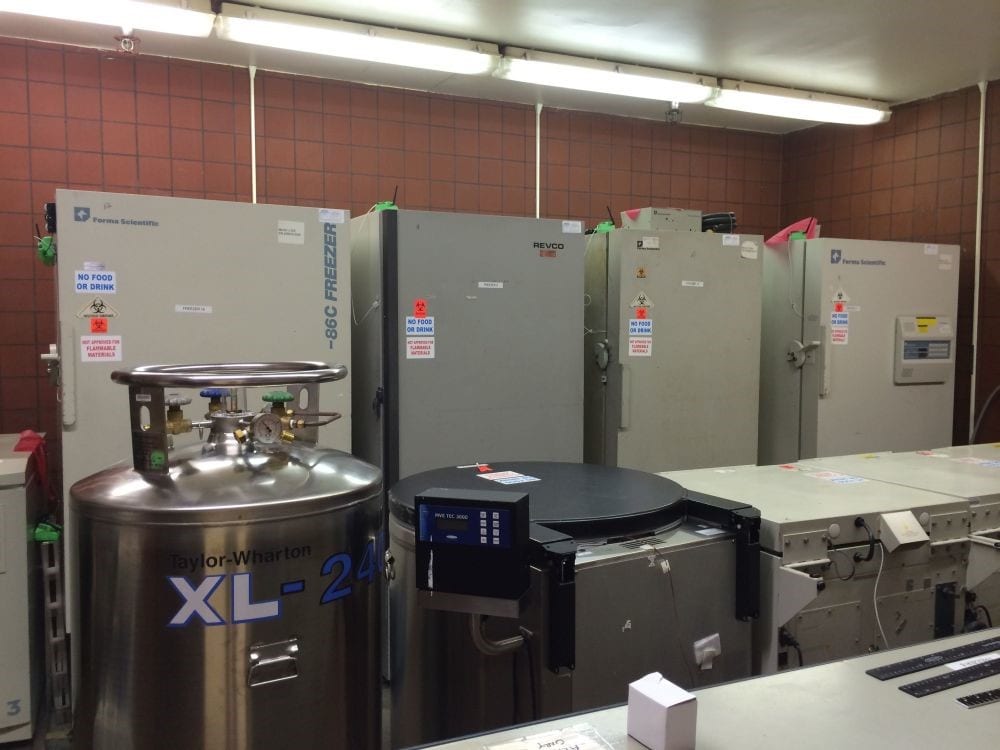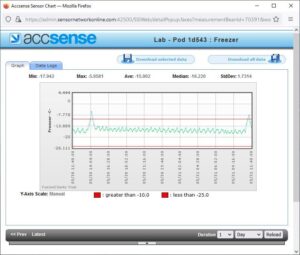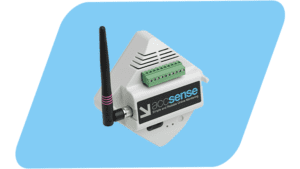Accsense System Protects Irreplaceable Blood Samples
 The University of Southern California’s Maternal, Child, and Adolescent Virology Research Laboratory uses its Accsense system for monitoring reliable blood temperature and to provide alarm notification for their freezer storage units. This CLIA-certified lab also works under the NIH’s (National Institute of Health) Division of AIDS.
The University of Southern California’s Maternal, Child, and Adolescent Virology Research Laboratory uses its Accsense system for monitoring reliable blood temperature and to provide alarm notification for their freezer storage units. This CLIA-certified lab also works under the NIH’s (National Institute of Health) Division of AIDS.
Laboratory Manager Patricia Anthony, CLS, MT (ASCP) explains, “Our lab operates on a small NIH budget for pediatric AIDS research as part of the International Maternal Pediatric Adolescent AIDS Clinical Trials Network or IMPAACT. One of our ongoing projects is to maintain Lab Director Dr. Andrea Kovacs’ 25-year repository of specimens–these blood samples are irreplaceable. With this repository, our scientists have been able to produce vital research presented at CROI and IDSA in this past year along with numerous papers in progress.”
Freezer Temperature Monitoring Requirements
Researchers store blood samples taken from pregnant women with HIV for use in research testing and clinical trials. The lab stores its samples in two separate rooms containing a total of ten biorepository ultra-low temperature freezers and eleven liquid nitrogen freezers for cryogenic sample storage. These samples primarily include plasma, serum, and Peripheral Blood Mononuclear Cells (PBMCs). Anthony further outlines the lab’s operation, “Dr. Kovacs started this lab more than 25 years ago when Los Angeles became one of the epicenters of HIV. She worked to help prevent the transmission of HIV from mother to child, back when little was known about the disease. Currently, we have six people working in our lab, in addition to Infectious Disease Research Fellows and medical students.”
The biorepository samples are critical to this work so elaborate storage precautions are necessary. As is the case with many life science products, these specimens have to be maintained at a temperature of -70°C +/- 5°C. The viable PBMCs are kept in cryogenic storage and need to be stored at ≤ -140°C within their liquid nitrogen freezers. The lab also has refrigerators that are set to alarm if they go above 8°C.
Wireless System Installation
The lab’s wireless Accsense blood temperature monitoring system includes A1-13 and A1-02b Wireless Data Logger Pods and a B1-06 Gateway. The A1-13 pods connect to up to three PT100 RTD sensors for most temperature measurements in the lab, while the A1-02b pods use a type-T thermocouple for the cryogenic freezers. The A1-02b pods can alarm on the state of a refrigerator or freezer in case a door is accidentally left open for too long using its digital input connected to a magnetic switch. The pods operate on either battery or AC power providing continuous temperature monitoring in the case of a power outage. The lab also uses Accsense to monitor ambient temperature, with two more probes recording this value in both specimen rooms.
The Accsense pods are connected via Zigbee wireless communications to a B1-06 gateway that is in turn connected to the lab’s Ethernet network. The B1-06 Wireless Gateway collects and sends each logger’s data to the Accsense cloud servers. Once the data is uploaded, staff can view current values, graph historical data, or download it as a CSV file and load it into most spreadsheet applications including Excel ™. Together, these Accsense system components create a reliable laboratory temperature monitoring system for all Ultra-low and Cryogenic freezers.
The blood temperature monitoring online data can be viewed via a standard web browser on a computer or mobile device. The customizable interface and measurement dashboard shows the most recent data from each data logger, and users can display historical data going as far back as 2 years. The website provides separate accounts for just viewing data or viewing and configuration. It also offers a status panel showing any current or historical alarms. Configuration capabilities include setting alarm limits and defining alarm recipients for email, SMS, and voice notifications.

Automated Alarm Capability
The Research Lab’s staff relies on their Accsense installation to continually monitor their freezer storage unit temperatures and to automatically generate alarms when temperatures go outside preset limits. The lab’s Accsense monitoring subscription guarantees access to this functionality. In an alarm event, a group of four lab staff, including the lab manager, each receives an automated phone call and an email alarm.
Using the software interface, users have configured Accsense to take a temperature sample through each probe and also perform an alarm check every 15 minutes to see if any storage unit is outside its safe temperature values, with the usual alarm window being +/- 5°C. With this type of notification, it makes it possible for the research team to respond within less than an hour – before critical samples begin to degrade.
Upon receiving an alarm event, lab staff is able to immediately respond with corrective actions such as adjusting the AC in the room if necessary, lowering the temperature settings of the affected storage unit, or transferring samples to another unit in the case of equipment failure. On one occasion, the lab’s AC went out and the ambient temperature in the storage area started rising, putting an additional load on the freezers. However, thanks to the automated alarms, personnel had sufficient notice to move the affected freezer’s contents to a unit in another area, thereby ensuring the safety of the samples.
Post-Installation Benefits
 Anthony describes the main benefit of her Accsense temperature monitoring system as, “Definitely the alarming features! I wouldn’t be able to sleep at night without the system handling all the alarms for us. The temperature monitors carry us through the night and while we’re out on weekends.” Compared to visually checking the temperature throughout the day, automated monitoring is far more reliable, and the data is also documented for future reference and regulatory compliance. The system’s historic data archiving also helps maintenance efforts. For example, the lab manager was able to print out a chart showing one of the room’s temperature profiles to prove to her facilities managers that the ambient temperatures had become too high.
Anthony describes the main benefit of her Accsense temperature monitoring system as, “Definitely the alarming features! I wouldn’t be able to sleep at night without the system handling all the alarms for us. The temperature monitors carry us through the night and while we’re out on weekends.” Compared to visually checking the temperature throughout the day, automated monitoring is far more reliable, and the data is also documented for future reference and regulatory compliance. The system’s historic data archiving also helps maintenance efforts. For example, the lab manager was able to print out a chart showing one of the room’s temperature profiles to prove to her facilities managers that the ambient temperatures had become too high.
Anthony continues, “We have been supportive of Accsense and have encouraged other labs at USC to purchase the same system when they have been referred to us. With your system, we can always look online to see what’s going on and immediately respond if necessary. This repository is Dr. Kovacs’ life work and is the source and center of our research. Your Accsense temperature monitoring system assists us in this endeavor. We’ve had five abstracts accepted for Infectious Diseases Society of America ID Week last year and we’re planning on publishing several papers this year.”
For more info on Accsense Monitoring Systems, or to find the ideal solution for your application-specific needs, contact a CAS Data Logger Applications Specialist at (800) 956-4437 or request more information.

